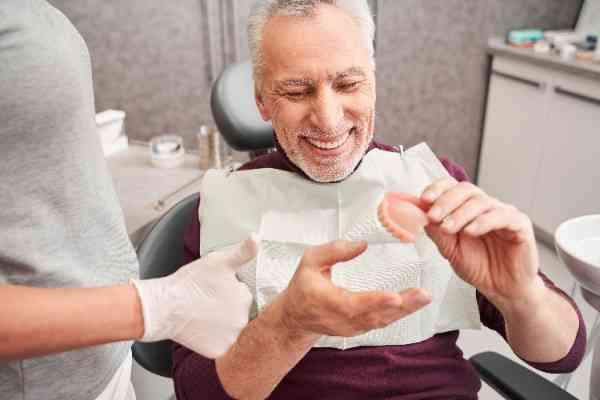Teeth Whitening and Orthodontics: When to Whiten After Braces

Orthodontic treatments such as braces and aligners are transformative when it comes to straightening teeth and correcting bite issues. However, once the braces are finally removed, many patients notice staining or discolouration on their teeth. This is natural since brackets and wires can make oral hygiene more difficult and may create shade differences across the enamel. For this reason, patients often ask when it is safe and most effective to undergo professional whitening after orthodontics. This guide explores everything you need to know about combining orthodontics with whitening while also highlighting treatment options like teeth whitening Luton services.
Why Staining Occurs During Braces
While braces move teeth into alignment, they also create small areas around the brackets that can trap food, plaque and bacteria. Even those who are diligent with an oral care routine may find that enamel develops uneven tones. Some specific causes of staining during braces include: plaque build-up around brackets, difficulty brushing and flossing in tight areas, and consuming staining foods and drinks like coffee or red wine. For patients who undergo orthodontic care, teeth whitening becomes a sought-after cosmetic solution to enhance their new smile. However, the timing of whitening is critical.

The Ideal Time to Whiten After Braces
Dentists typically recommend waiting at least two to four weeks after braces are removed before undergoing professional whitening. This allows enamel and gums to recover from the removal process, as teeth may initially feel sensitive. In some cases, if orthodontics caused mineral changes in enamel, waiting even longer might be advised for the best results. Immediate whitening after brace removal may cause uneven results if teeth require time to rehydrate and stabilise.
There is also the consideration of orthodontic retainer use. Removable retainers can be removed during whitening, which makes treatment easier. If a fixed retainer is placed, your dentist will assess whether whitening can still produce even coverage. Consulting an emergency dentist in Luton may also be necessary if you experience unexpected post-orthodontic concerns, sensitivity, or discomfort before pursuing whitening.
Options for Teeth Whitening in Luton
When you are ready, there are several effective choices for teeth whitening Luton patients can consider. These include in-clinic treatments using advanced whitening systems, custom take-home trays prescribed by a dentist, and less intensive over-the-counter products.
Key clinical options include:
- Professional chairside whitening: Uses bleaching gels and LED or laser activation to achieve rapid results.
- Custom whitening trays: Provide gradual whitening over 2–3 weeks with dentist-supervised application.
- Combination treatments: In-clinic whitening followed by a tray system for maintenance.
Over-the-counter solutions such as strips, pastes, and whitening pens are milder but often less effective for those who have completed orthodontic care.
Factors That Influence Whitening Success
Several elements determine how successful whitening will be after orthodontics. These include:
- Natural enamel shade and thickness
- Presence of orthodontic bonding residue
- Gum sensitivity from brace removal
- Dietary habits and lifestyle choices that influence staining
Your dentist will carefully evaluate these factors before recommending the most appropriate method of whitening.
Benefits of Whitening After Orthodontics
Whitening after orthodontic care is popular because it enhances the results of straightened teeth. The combination of aligned teeth and a brighter smile is often life-changing for patients.
Key benefits include:
- A uniform, stain-free enamel shade
- Boosted confidence in personal and professional interactions
- Long-lasting results when paired with good hygiene and lifestyle habits
What to Avoid Right After Braces
Straight after orthodontic removal, teeth and gums can be vulnerable. Patients are generally advised to avoid highly pigmented foods and drinks, such as berries, curry, tea, or coffee, as these can worsen discolouration. Tobacco products should also be avoided, not only for whitening results but for overall oral health. It is equally important not to turn to abrasive DIY whitening solutions, which may increase sensitivity or damage enamel.
Professional vs At-Home Whitening
|
Aspect |
Professional Whitening |
At-Home Whitening |
|
Results |
Fast, noticeable (1–2 sessions) |
Gradual improvement (2–4 weeks) |
|
Supervision |
Dentist-monitored |
Self-applied |
|
Safety |
Minimised risk of sensitivity or enamel weakening |
More risk if unsupervised |
|
Cost |
Higher |
More affordable |
|
Suitability post-braces |
Recommended after orthodontics |
Limited results, risk of uneven whitening |
This comparison shows that while at-home options exist, professional teeth whitening Luton treatments provide the safest and most reliable results after orthodontics.
Signs You’re Ready for Whitening
- No gum inflammation or soreness post-braces
- Teeth have had at least a few weeks to rehydrate and settle
- A retainer is being worn consistently and does not interfere with whitening trays
Aftercare Tips for Whitening Results
- Brush with a sensitive toothpaste to ease temporary sensitivity
- Rinse with fluoride mouthwash to strengthen enamel
- Avoid dark drinks and use a straw for any caffeinated or pigmented beverages
When to See a Dentist Immediately
- If tooth sensitivity becomes severe or prolonged
- If uneven whitening or patchy results appear
- If there are concerns with retainers or unexpected enamel changes
Long-Term Considerations
Maintaining whitening results after orthodontics and professional treatment requires commitment. Good oral hygiene is key—brushing at least twice daily, flossing, and attending regular check-ups. Lifestyle choices, such as limiting pigmented foods and avoiding smoking, significantly impact how long whitening results last. Regular professional cleaning also ensures teeth remain stain-free and healthy.

Additionally, for patients who experience sudden issues or ongoing discomfort, visiting an emergency dentist in Luton can provide quick intervention and guidance.
Whitening with Aligners vs Braces
Many patients today choose clear aligners over traditional braces for orthodontic treatment, and the whitening approach can differ between the two. With fixed braces, whitening is only advised after removal to avoid uneven shades. On the other hand, aligner treatments may provide opportunities for progressive whitening, since gel can sometimes be placed inside the trays with a dentist's guidance.
However, not all aligner brands are designed for whitening, and improper use can cause sensitivity. After both braces and aligners, a professional consultation is essential to determine the safest timing for whitening. For patients in need of additional reassurance, consulting an emergency dentist in Luton is recommended if unexpected issues such as prolonged tooth pain or white spot lesions occur before starting teeth whitening Luton treatments.
Conclusion
Whitening after orthodontics is not only safe but also highly rewarding when timed correctly. Waiting a few weeks after brace removal allows for stable, even results that maximise the effects of orthodontic treatment. With options for professional care and tailored solutions, patients can achieve a noticeably brighter smile. Choosing trusted teeth whitening Luton services ensures results that are both safe and long-lasting. For those seeking personalised care, consultations with dental professionals are the best route. At EDL, patients benefit from expert guidance and treatment options that bring out the very best in their post-orthodontic smiles.
- Art
- Causes
- Crafts
- Dance
- Drinks
- Film
- Fitness
- Food
- Oyunlar
- Gardening
- Health
- Home
- Literature
- Music
- Networking
- Other
- Party
- Religion
- Shopping
- Sports
- Theater
- Wellness


